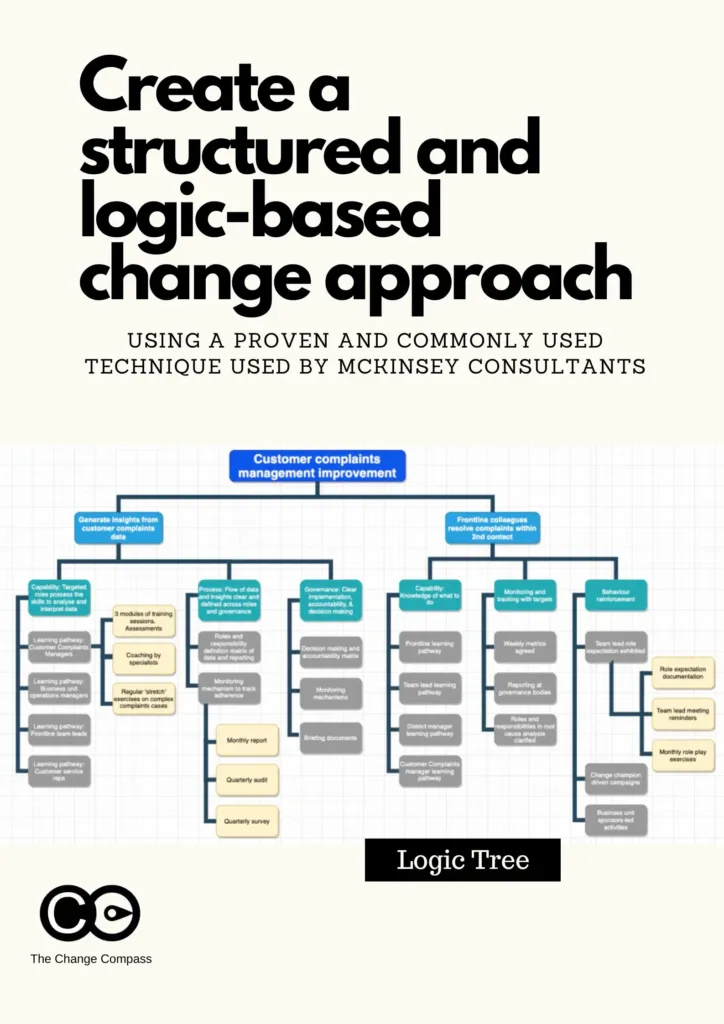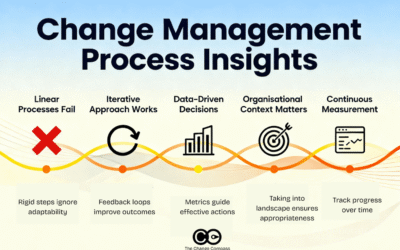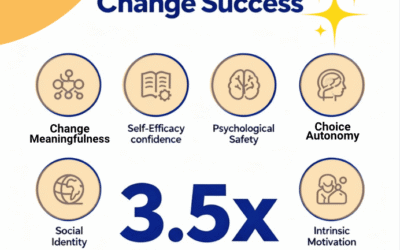Often change approaches are built not using a structured and well-defined series of logics but often using a cookie-cutter, standard change approach or change strategy template. In some cases, a ‘gut-feel’ may also be used based on stakeholder wishes or preferences. These are subject to stakeholder criticism nor do not achieve the goals of the initiative.
The usual standard change approach for most initiatives often entail the following.
- Stakeholder engagement – setting up forums and
sending emails to stakeholders - Training – planning for and executing training
delivery to ensure users understand the new system/process - Pre-go live readiness – send reminder emails and
build intranet articles to raise awareness
How might we better derive change approach using sound logic and an evidence-backed approach?
One way to construct a logical, structured and well-thought-through change approach is by using a logic tree. A logic tree is a visualization that captures all the component parts of a problem, in order to make it easier to identify a hypothesis that can then be tested using data and analysis. Logic trees are great for making decisions by visually decomposing the various elements and reviewing these holistically.
In the following example, a family uses a logic tree to decide which new town to move to by narrowing almost 30 possible potential locations to just one. In the following diagram (from Bulletproof problem solving, Wiley 2019) you can see how this family started with the problem it is trying to solve, and then broke down the problem into its elements. Then within each branch a weighting is assigned to each branch, in terms of percentages. Then each sub-branch is also assigned weightings.
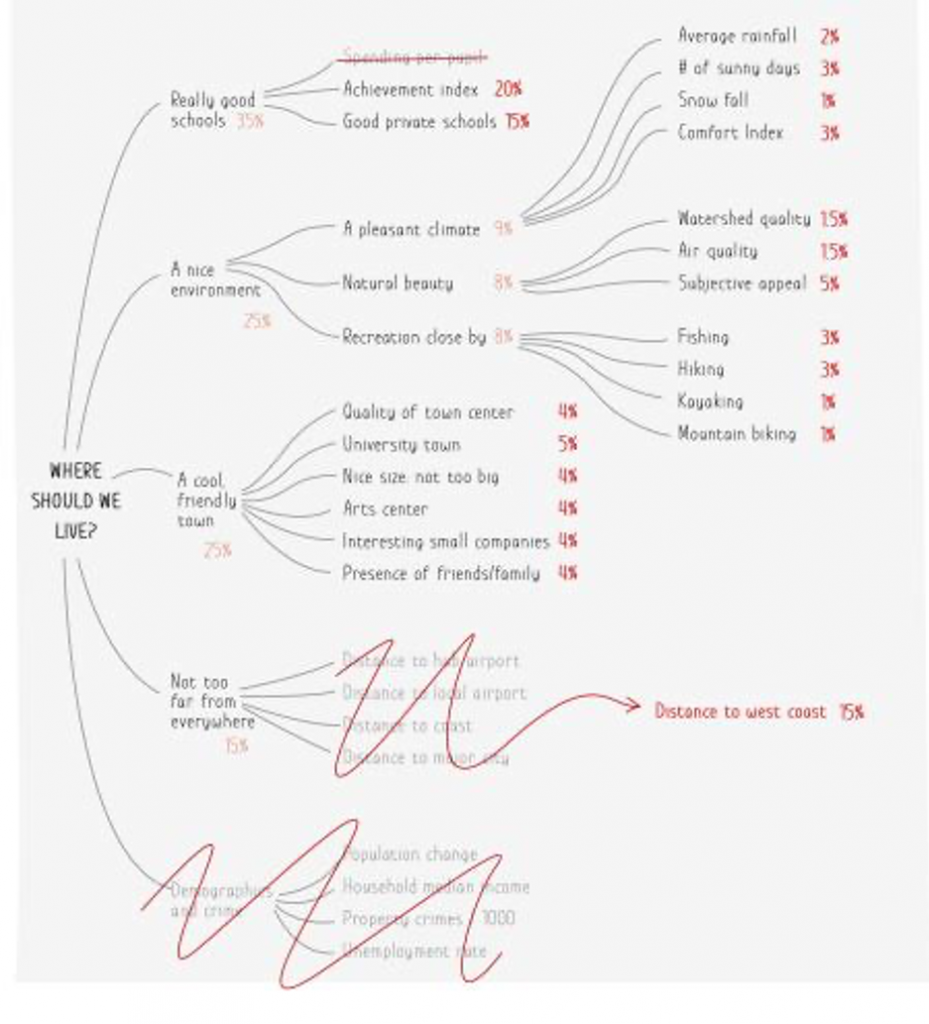
Then as a next step data can be collected to determine which town meets the various criteria as defined in the logic tree. By doing this, laying out the various components, and analysing its weightings, you can derive the best location.
This is how McKinsey consultants and other strategy consultants solve large complex problems. The logic tree forces you to structure your problem versus being lost in focusing on certain approaches and neglecting others. Any problem can be solved using this approach. Even the largest of problems can be broken down into its smallest components.
Strategy consultants then go through every branch to analyse them and collect data to prove or disprove each branch one by one. This means, that each branch or hypothesis is tested and proven or disproven. In this way, every option is considered and the chance of making a wrong decision is greatly reduced.
So how might we build a logic tree that helps derive the change approach for an initiative?
- Start by defining the problem or question to be addressed. What is the goal of the initiative? Is it to implement a new system that is fully adopted by its users? Is it to increase cross-selling by sharing customer information across business units?
- Think of the broader buckets of each branch. What are the core types of change approaches to address the problem? Think widely and carefully about all the types of buckets possible that would address the problem.
- Expand the branches until you have covered all possibilities
- Go through and assign a weighting in percentage terms to each branch and then use this to determine the focus and importance you may want to place on certain branches in terms of research and data collection
- Go through each branch and systematically to reject any that do not apply based on data. For example, one branch could be to use video as a channel to communicate. However if the data shows that previous usage of video to communicate key messages did not result in raising awareness for this stakeholder group, then reject this option
Here is one partial example of deriving a change approach for a customer complaints project.
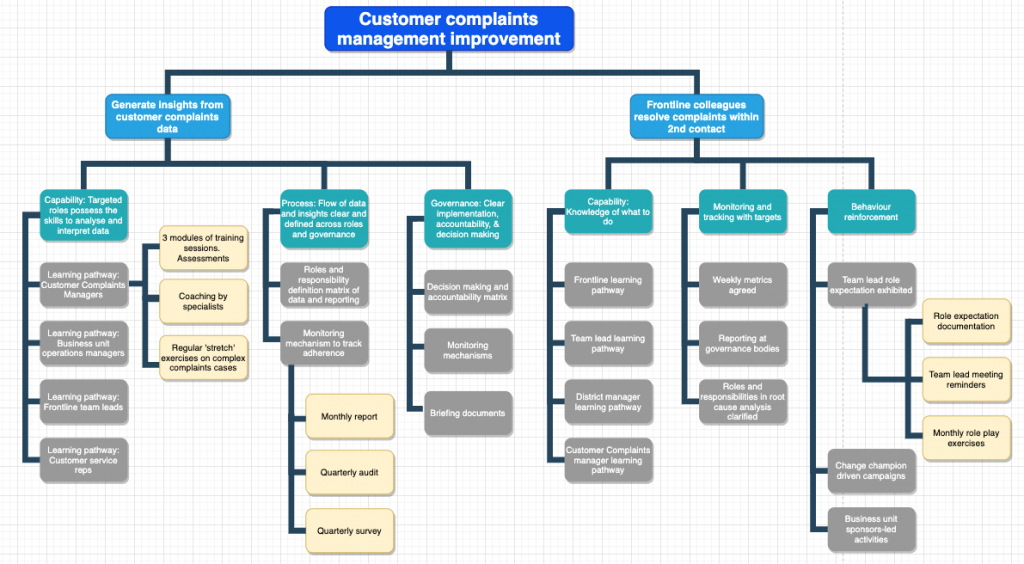
Click here to download this diagram.
One important principle to note when building branches is to ensure that the branches are MECE. MECE stands for mutually exclusive and collectively exhaustive. Mutually exclusive means that you need to ensure that each branch is unique and does not overlap with any other branch. Collectively exhaustive means that every option or alternative has been considered and nothing is left off. In this way, the branches you have built are bulletproof from a logical structure perspective.
Building a change approach using a structured approach that is data-supported and logic tested will earn significant stride with the most critical of your stakeholders. You can even hold a workshop to work with your stakeholders to define the logic tree and assign weightings so that that the agreed approach is one that is clearly visible and logically sound.
Another important point to keep in mind is how each of the branches of the logic tree change approach will interface into the overall change environment. When planning on the execution of the overall change approach or each branch of the approach, one needs to be clear around the velocity and volume of change and what else is happening in the change landscape. Using data visualisation tools such as The Change Compass is one way to grasp and plan around the change environment.
